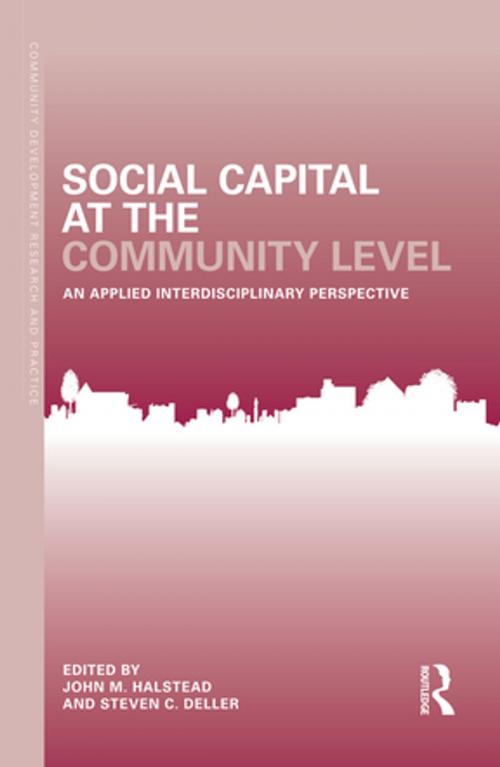Social Capital at the Community Level
An Applied Interdisciplinary Perspective
Nonfiction, Social & Cultural Studies, Political Science, Politics, Regional Planning, Art & Architecture, Architecture, Landscape| Author: | ISBN: | 9781317686033 | |
| Publisher: | Taylor and Francis | Publication: | April 24, 2015 |
| Imprint: | Routledge | Language: | English |
| Author: | |
| ISBN: | 9781317686033 |
| Publisher: | Taylor and Francis |
| Publication: | April 24, 2015 |
| Imprint: | Routledge |
| Language: | English |
In Social Capital at the Community Level, John Halstead and Steven Deller examine social capital formation beyond the individual level through a variety of disciplines: planning, economics, regional development, sociology, as well as non-traditional approaches like engineering and built environmental features. The notion of social capital in community and economic development has become a focus of intense interest for policy makers, practitioners, and academics. The notion is that communities with higher levels of social capital (networks, trust, and norms) will prosper both economically and socially. In a practical sense, how do communities use the notion of social capital to build policies and strategies to move their community forward? Are all forms of social capital the same and do all have a positive influence on the community? To help gain insights into these fundamental questions Social Capital at the Community Level takes a holistic, interdisciplinary or systems approach to thinking about the community.
While those who study social capital will acknowledge the need for an interdisciplinary approach, most stay within their disciplinary silos. One could say there is strong bonding social capital within disciplines but little bridging social capital across disciplines. The contributors to Social Capital at the Community Level have made an attempt to build that bridging social capital. While disciplinary biases and research approaches are evident there is significant overlap about how people with different disciplinary perspectives think about social capital and how it can be applied at the community level. This can be from neighborhoods addressing a localized issue to a global response to a natural disaster. This book is an invaluable resource for scholars, researchers and policy makers of community and economic development, as well as rural sociologists and planners looking to understand the opaque process of social capital formation in communities.
In Social Capital at the Community Level, John Halstead and Steven Deller examine social capital formation beyond the individual level through a variety of disciplines: planning, economics, regional development, sociology, as well as non-traditional approaches like engineering and built environmental features. The notion of social capital in community and economic development has become a focus of intense interest for policy makers, practitioners, and academics. The notion is that communities with higher levels of social capital (networks, trust, and norms) will prosper both economically and socially. In a practical sense, how do communities use the notion of social capital to build policies and strategies to move their community forward? Are all forms of social capital the same and do all have a positive influence on the community? To help gain insights into these fundamental questions Social Capital at the Community Level takes a holistic, interdisciplinary or systems approach to thinking about the community.
While those who study social capital will acknowledge the need for an interdisciplinary approach, most stay within their disciplinary silos. One could say there is strong bonding social capital within disciplines but little bridging social capital across disciplines. The contributors to Social Capital at the Community Level have made an attempt to build that bridging social capital. While disciplinary biases and research approaches are evident there is significant overlap about how people with different disciplinary perspectives think about social capital and how it can be applied at the community level. This can be from neighborhoods addressing a localized issue to a global response to a natural disaster. This book is an invaluable resource for scholars, researchers and policy makers of community and economic development, as well as rural sociologists and planners looking to understand the opaque process of social capital formation in communities.















